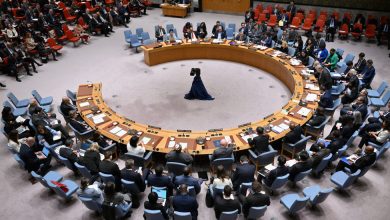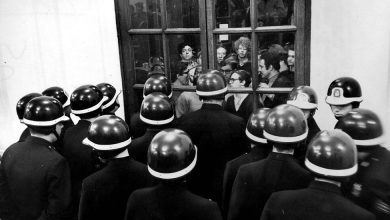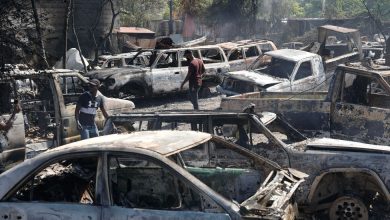Pentagon Chief Orders New Inquiry Into U.S. Airstrike That Killed Dozens in Syria

Defense Secretary Lloyd J. Austin III on Monday ordered a new high-level investigation into a U.S. airstrike in Syria in 2019 that killed dozens of women and children, according to a senior Defense Department official.
The investigation by Gen. Michael X. Garrett, the four-star head of the Army’s Forces Command, will examine the strike, which was carried out by a shadowy, classified Special Operations unit called Task Force 9, as well as the handling of the task force’s investigation by higher military headquarters and the Defense Department’s inspector general, the official said.
General Garrett will have 90 days to review inquiries already conducted into the episode, and further investigate reports of civilian casualties, whether any violations of laws of war occurred, record-keeping errors, whether any recommendations from earlier reviews were carried out, and whether anyone should be held accountable, said the official, who spoke on condition of anonymity because the investigation had not been announced.
The Pentagon is expected to announce the new inquiry on Monday after notifying Congress. Both the House and Senate Armed Services committees have said they are investigating the episode.
Mr. Austin’s decision comes in the wake of a New York Times investigation earlier this month that described allegations that top officers and civilian officials had sought to conceal the casualties.
In a news conference two weeks ago, Mr. Austin vowed to overhaul military procedures and hold top officers responsible for civilian harm, but he did not outline any systemic problems that had allowed civilian casualties to persist on battlefields in Syria and Afghanistan.
The Syria airstrike, which took place near the town of Baghuz on March 18, 2019, as part of the final battle against Islamic State fighters in a shard of a once-sprawling religious state across Iraq and Syria. It was among the largest episodes of civilian casualties in the yearslong war against ISIS, but the U.S. military had never publicly acknowledged it.
The classified task force investigated the strike and acknowledged that four civilians were killed, but it also concluded that there had been no wrongdoing by the Special Operations unit. In October 2019, the task force sent its findings to the Central Command headquarters in Tampa, Fla.
But officials at Central Command did not follow up and failed to remind a subordinate military headquarters in Baghdad to do so, in what Capt. Bill Urban, a Central Command spokesman, described as “an administrative oversight.” As a result, senior military officials in Iraq and Florida never reviewed the strike, and the investigation technically remained open until the Times investigation.
Mr. Austin, who became defense secretary this year, received a classified briefing earlier this month about the strike and the military’s handling of it from Gen. Kenneth F. McKenzie Jr., the head of the military’s Central Command, which oversaw the air war in Syria.
The Times investigation showed that the death toll from the strike — 80 people — was almost immediately apparent to military officials. A legal officer flagged the bombing as a possible war crime that required an investigation. But at nearly every step, the military made moves that concealed the catastrophic strike. The Defense Department’s independent inspector general began an inquiry, but the report containing its findings was stalled and stripped of any mention of the strike.
In an email to the Senate Armed Services Committee this spring, the legal officer who witnessed the strike warned that “senior ranking U.S. military officials intentionally and systematically circumvented the deliberate strike process,” and that there was a good chance that “the highest levels of government remained unaware of what was happening on the ground.”
A spokesman for the Armed Services Committee, Chip Unruh, said that the panel “remains actively engaged and continues to look at the matter.” Representative Adam Smith, a Democrat from Washington State who heads the House Armed Services Committee, announced earlier this month that his panel would also investigate the strike and the military’s handling of it.
Key Findings From the Baghuz Airstrike Investigation
Uncovering the truth. Over several months, The New York Times pieced together the details of a 2019 airstrike in Baghuz, Syria, one of the largest civilian casualty incidents of the war against the Islamic State. Here are the key findings from the investigation:
The U.S. military carried out the attack. Task Force 9, the secretive special operations unit in charge of ground operations in Syria, called in the attack. The strike began when an F-15E attack jet hit Baghuz with a 500-pound bomb. Five minutes later, the F-15E dropped two 2,000-pound bombs.
The death toll was downplayed. The U.S. Central Command recently acknowledged that 80 people, including civilians, were killed in the airstrike. Though the death toll was almost immediately apparent to military officials, regulations for investigating the potential crime were not followed.
Reports were delayed, sanitized and classified. The Defense Department’s independent inspector general began an inquiry, but the report containing its findings was stalled and stripped of any mention of the strike.
American-led coalition forces bulldozed the blast site. Civilian observers who came to the area of the strike the next day described finding piles of dead women and children. In the days following the bombing, coalition forces overran the site, which was quickly bulldozed.
The Times investigation found that the bombing by Air Force F-15E attack jets had been called in by Task Force 9, made up largely of the U.S. Army’s elite Delta Force. The task force was in charge of ground operations in Syria, working closely with Syrian Kurdish and Arab militia. Military personnel who spoke to The Times said the secretive task force circumvented oversight by claiming that a vast majority of its strikes required immediate action to protect allied troops from imminent threat. Often, military officers said, no such threat was present.
After The Times sent its findings to U.S. Central Command, the command acknowledged the attack for the first time. It said in a statement that the 80 deaths were justified because the task force had launched a self-defense strike against a group of fighters who were an imminent threat to allied forces on the ground.
Central Command told The Times that the strike had included three guided bombs: a 500-pound bomb that hit the initial group and two 2,000-pound bombs that targeted people fleeing the initial blast. The command later corrected itself, saying all three bombs were 500-pound munitions.
The command said the three strikes killed 16 fighters and four civilians. As for the other 60 people killed, the statement said it was not clear that they were civilians, in part because women and children in the Islamic State sometimes took up arms.
Some military experts criticized the Pentagon for not ordering an independent review of the strike.
“Once again, we’ll be asked to trust that the U.S. military can grade its own homework,” said Sarah Holewinski, the Washington director of Human Rights Watch and a former senior adviser on human rights to the military’s Joint Staff. “I’ve seen these investigations into civilian deaths in Afghanistan, Iraq and Syria. In none of them was anyone held accountable.”
In addition to the new investigation into the Syria strike, Mr. Austin is still weighing newly submitted plans from top commanders on how to mitigate civilian casualties in military operations worldwide. Those steps were recommended in a separate investigation into a drone strike in Kabul, Afghanistan, on Aug. 29 that killed 10 civilians, including seven children.
Those recommendations are expected to be included in a larger Pentagon policy overhaul intended to mitigate civilians casualties that is now underway, Defense Department officials said on Monday.




